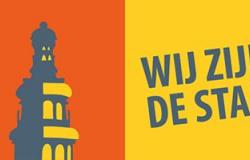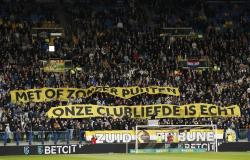
One village already has a good lump in place, the other only started construction on Friday. Stricter rules do not make it any more fun for organizers to keep the traditional Easter fire alive.
Take Westerbork, which in previous years had the largest Easter bump in the municipality of Midden-Drenthe. That’s not possible this year. Where previously the pile of pruning wood was built up weeks in advance, the Easter fire committee now has two days to make the bump in the meadow along the Heerakkers. Committee member Harry Veen: “And the weather is also likely to be bad on Saturday. So do people bring in prunings and is the land accessible? We’ll just have to see what happens bultie it will be.”
Emissions equal to New Year’s Eve
What is he stuck with? Municipalities and provinces have drawn up stricter rules for the Easter fires due to the emission of particulate matter and other harmful substances. The RIVM has calculated that emissions from Easter fires are comparable to the peak of fireworks during New Year’s Eve. Emissions from Easter fires amount to just under 2 percent of the total annual emissions in our country.
Another factor in Drenthe is that Easter fires may not be located within a radius of 5 kilometers from a Natura 2000 area. If this is the case, an additional permit with a complicated nitrogen calculation is required. For example, the organizer of the Easter fire must be an ecological one quick scan ( global research) carried out to see whether any animals are staying in the Easter bump. In addition, municipalities have their own Easter fire rules that vary per municipality. This concerns distance to buildings, nature and roads.
Exception from 1994
To ensure that the age-old tradition is not lost, municipalities helped with the nitrogen calculations. It was agreed with the province to make an exception for organizers of Easter fires that have been lit at the current location since 1994. They do not have to perform a nitrogen calculation for an Easter fire. A simple request for an exemption is then sufficient. But show thirty years later that the Easter fire already existed in 1994.
You have to search the minutes and archives for evidence and not everyone succeeds, as in Hijken and Vries. Tonnie van de Koolwijk of Volksvermaken Vries: “Our Easter bump has been in the same place since the 1970s, but we have not been able to prove that. Anyway, our municipality did the nitrogen calculation last year and carried out a quick scan. We were able to use the nitrogen calculation when applying for the exemption and we no longer need to have a quick scan carried out until next year. We are saved for the time being, but I think it will become increasingly difficult to have an Easter bonfire in the future.”
Mouse or bird
Back to Westerbork. The Easter fire is located within a 5 kilometer radius of a Natura 2000 area and has been held at the Heerakkers for less than 30 years. Harry Veen: “We have been in this place for 20 years and we should call in an ecologist to see if there is still a mouse or bird in our Easter bump. We were able to avoid this by only building up the bump two days before lighting. I know that others have been working on the construction for some time, but we have decided to stick to the rules. The fun will soon be gone. But hey, you do it for the children, right.”
Easter fire goes back to Germanic people
Lighting Easter fires is an age-old tradition that dates back to the time of the Germanic people. The fires were lit to offer a sacrifice to the god Ostara. The fire symbolized fertility and new beginnings. Easter is therefore also seen as a fertility festival. Easter fires are lit from Denmark to Switzerland and Austria. In our country it is a tradition, mainly in the North and East. The Easter fire is lit on Easter First or Second Day. In the German border region, the Easter bumps are traditionally set on fire on the Saturday evening before Easter. When there is an easterly wind, this can often be clearly smelled in our provinces.
Tags: Stricter rules Easter fire fun organizers kind bull turns





